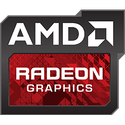
AMD Radeon RX 6700 XT BIOS Analysis Reveals Extreme GPU Clock Limits
AMD is expected to debut its Radeon RX 6700 series based on the "Navi 22" silicon following its RX 6900 XT launch, to compete with NVIDIA's GeForce RTX 3060/Ti. Several rumored specifications of the RX 6700 series surfaced in an older report from last week, which referenced a similar compute unit count to the previous-generation RX 5700 series, but with a 25% narrower memory bus, at 192-bit. The memory amount itself has been increased by 50% to 12 GB, using higher memory density per memory channel. In that report we wondered how AMD could overcome the deficit of lower memory bandwidth, and whether an Infinite Cache solution is being used. Turns out, that the RX 6700 series should end up faster than the RX 5700 series on virtue of an enormous GPU clock (engine clock) increase, according to an Igor's Lab report.
Igor Wallossek analyzed two video BIOS images of Radeon RX 6700 series graphics cards, using MorePowerTool, and uncovered engine clock limits as high as 2854 MHz with 2950 MHz overdrive limits. Just to be clear, these are limits, and not manufacturer-set boost clocks. For example, the RX 6800 XT has a reference max boost frequency of 2250 MHz, whereas its clock limit set in the BIOS is 2800 MHz. One of the BIOS analyzed by Wallossek has a power limit of 220 W, and the other 186 W. Interestingly, the cards have the same 1075 MHz memory clock limit seen on the RX 6800 XT, which confirms that AMD is using 16 Gbps-rated GDDR6 memory, and that over a 192-bit wide memory bus, this would yield 384 GB/s of memory bandwidth. Find more technical commentary by Igor's Lab in the source link below.
Igor Wallossek analyzed two video BIOS images of Radeon RX 6700 series graphics cards, using MorePowerTool, and uncovered engine clock limits as high as 2854 MHz with 2950 MHz overdrive limits. Just to be clear, these are limits, and not manufacturer-set boost clocks. For example, the RX 6800 XT has a reference max boost frequency of 2250 MHz, whereas its clock limit set in the BIOS is 2800 MHz. One of the BIOS analyzed by Wallossek has a power limit of 220 W, and the other 186 W. Interestingly, the cards have the same 1075 MHz memory clock limit seen on the RX 6800 XT, which confirms that AMD is using 16 Gbps-rated GDDR6 memory, and that over a 192-bit wide memory bus, this would yield 384 GB/s of memory bandwidth. Find more technical commentary by Igor's Lab in the source link below.







































































